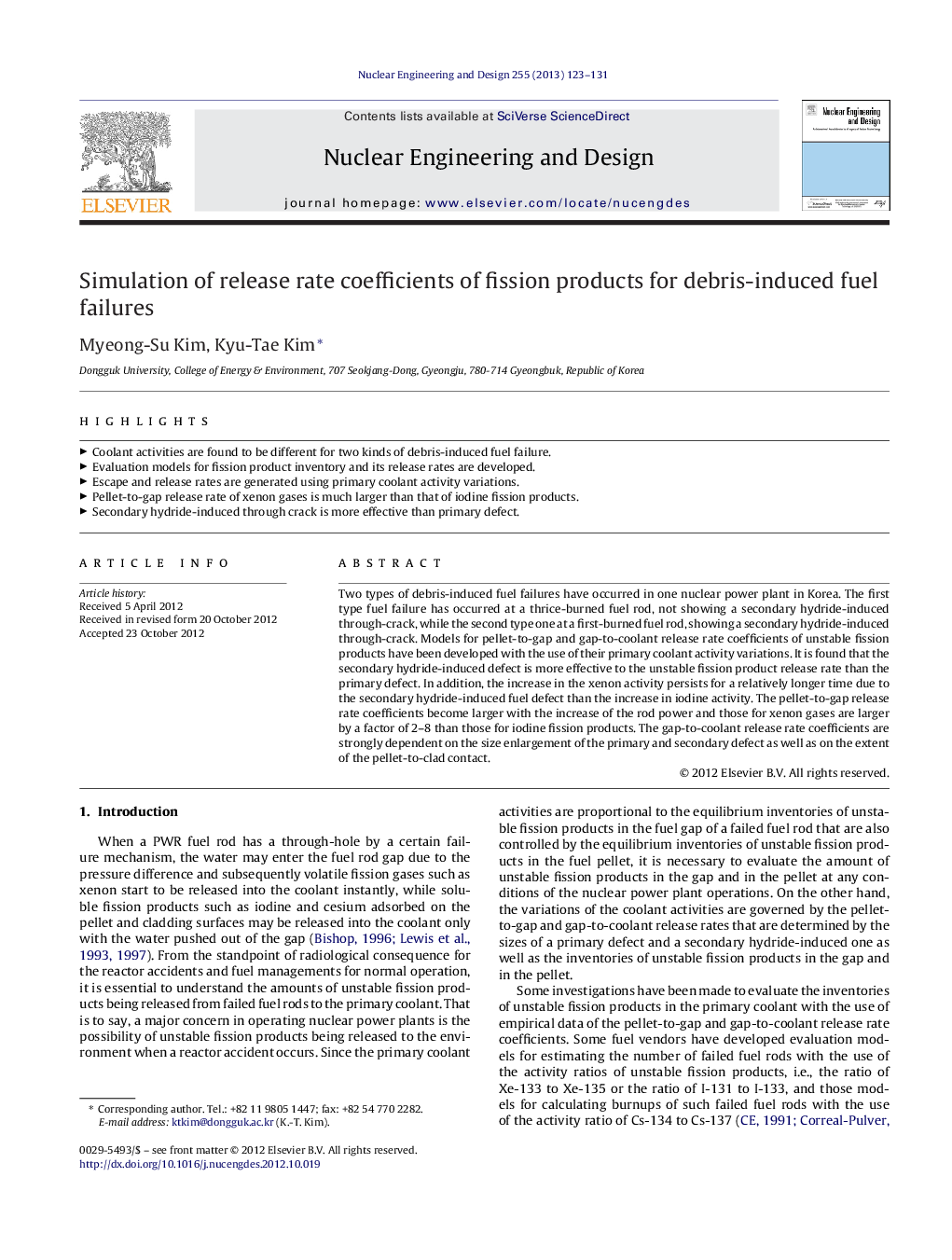| Article ID | Journal | Published Year | Pages | File Type |
|---|---|---|---|---|
| 297106 | Nuclear Engineering and Design | 2013 | 9 Pages |
Two types of debris-induced fuel failures have occurred in one nuclear power plant in Korea. The first type fuel failure has occurred at a thrice-burned fuel rod, not showing a secondary hydride-induced through-crack, while the second type one at a first-burned fuel rod, showing a secondary hydride-induced through-crack. Models for pellet-to-gap and gap-to-coolant release rate coefficients of unstable fission products have been developed with the use of their primary coolant activity variations. It is found that the secondary hydride-induced defect is more effective to the unstable fission product release rate than the primary defect. In addition, the increase in the xenon activity persists for a relatively longer time due to the secondary hydride-induced fuel defect than the increase in iodine activity. The pellet-to-gap release rate coefficients become larger with the increase of the rod power and those for xenon gases are larger by a factor of 2–8 than those for iodine fission products. The gap-to-coolant release rate coefficients are strongly dependent on the size enlargement of the primary and secondary defect as well as on the extent of the pellet-to-clad contact.
► Coolant activities are found to be different for two kinds of debris-induced fuel failure. ► Evaluation models for fission product inventory and its release rates are developed. ► Escape and release rates are generated using primary coolant activity variations. ► Pellet-to-gap release rate of xenon gases is much larger than that of iodine fission products. ► Secondary hydride-induced through crack is more effective than primary defect.
